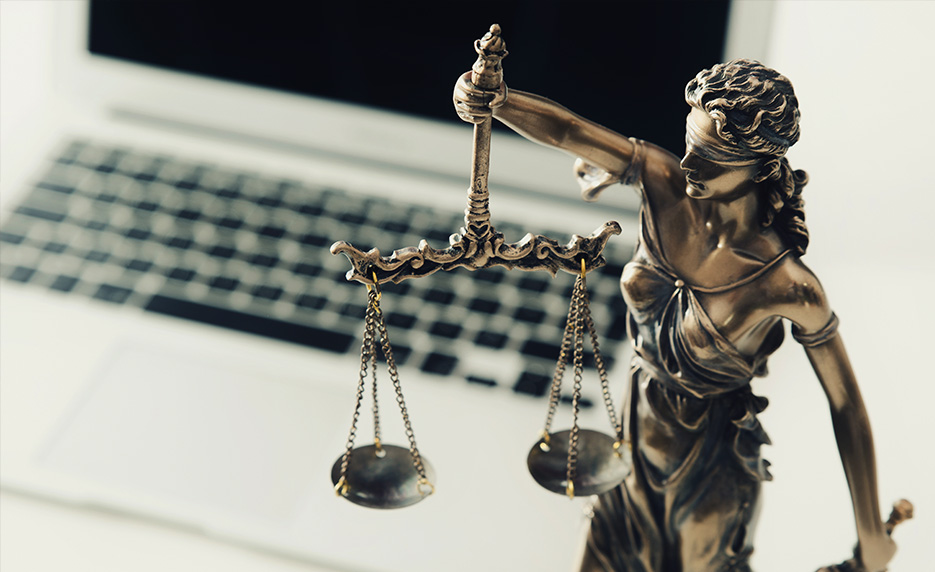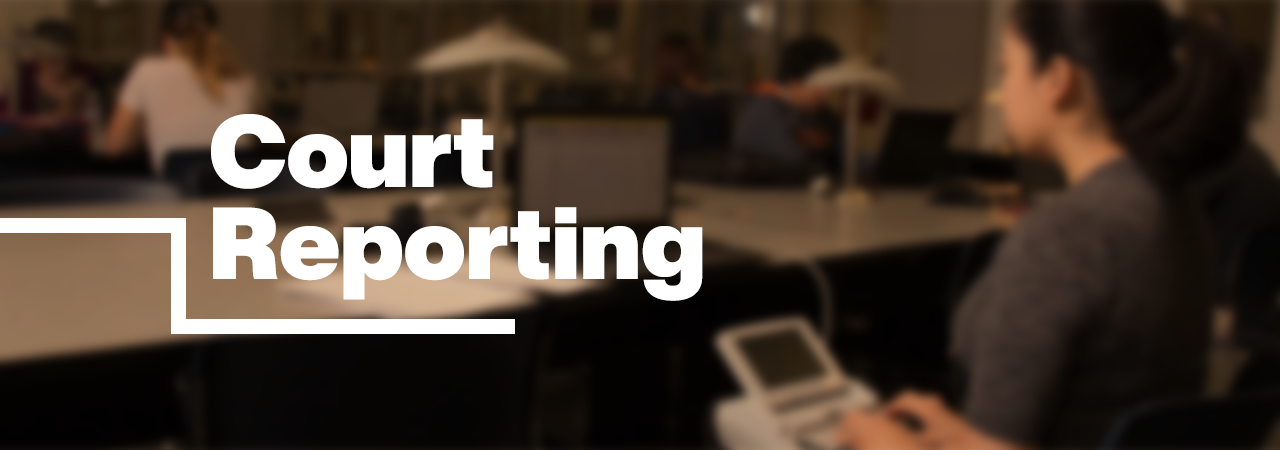How Court Reporting Functions: A Step-by-Step Overview to the Legal Process
Court reporting is a crucial part of the lawful system. It involves an organized process that guarantees exact paperwork of process. From preparation to the final shipment of records, each step is necessary. Comprehending how court press reporters operate deals insight right into the stability of lawful records. The subtleties of their work can profoundly affect lawful outcomes, motivating questions concerning the innovations and methods they use. What are the particular methods that specify this profession?
The Function of Court Reporters in the Legal System
Stenotype reporter play a crucial function in the legal system by offering exact and trustworthy records of court proceedings. Their work warranties that every spoken word throughout trials, depositions, and hearings is recorded, which is critical for preserving a main document of events. This transcription is essential for allures, as it permits greater courts to assess the proceedings and figure out if any kind of errors were made during the test.
Furthermore, court reporters help in protecting the integrity of the legal process by producing verbatim documents that can be described by legal representatives, courts, and other celebrations associated with a case. They commonly make use of customized tools and software application to catch dialogue with precision. Beyond the courtroom, their records can work as important historic documents, offering understanding right into judicial proceedings and the lawful system's performance. Ultimately, stenotype reporter contribute greatly to openness and responsibility in lawful matters.
Planning for a Court Reporting Session
Prep work is essential for an effective court reporting session, as it assures the precision and effectiveness of the transcription process. Stenotype reporter begin by evaluating case materials, including pleadings and witness checklists, to acquaint themselves with the terms and context. They likewise make sure that they have the needed tools, such as steno equipments, note pads, and back-up tools, on-line.
Prior to the session, communication with legal groups is crucial. Reporters typically clarify any details requests concerning format or liked terminology. In addition, they might arrange to fulfill with witnesses or lawyers to talk about the proceedings and validate the routine. Getting here very early to set up the devices allows for troubleshooting potential technological problems. Overall, detailed prep work not just improves the press reporter's confidence yet likewise adds significantly to generating a clear and precise document of the legal process.

Capturing the Document: Methods and Equipment
Using innovative techniques and trustworthy tools, stenotype reporter thoroughly record the spoken word during lawful proceedings. They utilize stenography, an approach involving a specialized device that enables them to kind several noises all at once, thereby recording dialogue in real time. This device, referred to as a steno key-board, is outfitted with tricks that represent syllables and words, allowing swift and precise input.
In enhancement to stenography, court press reporters may use audio recording devices as additional tools. These tools act as back-ups, guaranteeing that no essential info is shed throughout process. In addition, some reporters incorporate software application that enhances their transcription performance, providing functions such as voice recognition and automated format.
Correct positioning and emphasis are extremely important; press reporters must preserve interest on all speakers, recording subtleties and inflections that add to the record. Through a mix of ability and innovation, court reporters support the integrity of the lawful procedure by guaranteeing a accurate and thorough document of events.
Transcribing the Process
Transcribing the procedures requires court press reporters to convert spoken discussion into composed message with extraordinary accuracy and rate. This process usually takes area promptly after the recording has actually been recorded, utilizing specialized software that enables seamless transcription. Stenotype reporter need to listen attentively to the sound, making certain that every word, inflection, and pause is precisely represented in the records.
They commonly depend on shorthand systems, individual transcription skills, and progressed modern technology to promote this task. The atmosphere in which they work can be in some cases disorderly and fast-paced, as lawful process frequently entail multiple speakers and technical jargon. Stenotype reporter need to likewise keep concentration to catch subtleties in tone and context that may be essential for the lawful record. Ultimately, the accuracy of the transcription is vital, as it functions as an official record for future recommendation in lawful proceedings.
Reviewing and Modifying the Transcript
The process of examining and editing and enhancing the records is vital for guaranteeing precision in court reporting. Stenotype reporter usually work together with attorneys to clear up any kind of obscurities and validate the correctness of the recorded statements. This partnership is vital for maintaining the honesty of the legal record.
Relevance of Precision
Precision acts as the keystone of reliable court reporting, as even minor mistakes can considerably change the meaning of legal proceedings. The examining and modifying procedure is crucial in ensuring that records mirror the spoken word with integrity. Stenotype reporter diligently verify names, technical terms, and lawful jargon to maintain precision. This attention to information assists stop misunderstandings that can affect case end results. Additionally, accuracy cultivates trust fund among lawyers, clients, and the court, enhancing the honesty of the judicial system. Errors can bring about allures or conflicts, making it essential for press reporters to fine-tune their work completely. Ultimately, the search of precision not only boosts the dependability of the transcript yet likewise upholds the criteria of the legal occupation.
Collaboration With Lawyers
Collaboration between court reporters and lawyers is vital during the examining and editing stage of records production. This procedure assures that the final paper accurately shows the spoken word and sticks site here to lawful requirements. Lawyers commonly evaluate records for certain terminology, context, and any type of potential mistakes that could influence the instance. Stenotype reporter depend on attorneys' proficiency to make clear uncertain areas or highlight essential statements. Reliable interaction is vital; attorneys might provide comments or request improvements, which court reporters must deal with immediately. This collaboration not just boosts the quality of the transcript but likewise adds to a smoother legal process. Eventually, collaborative efforts result in a trustworthy and precise record, vital for legal process and future references.
Supplying the Last Transcript to Clients
Upon completion of the transcription process, stenotype reporter thoroughly prepare the last paper for shipment to their customers. This final records goes through comprehensive checking to assure precision, as any kind of errors could considerably influence lawful procedures. Stenotype reporter style the file according to the specific requirements set forth by the customers or lawful companies, including pagination, indexing, and any essential exhibitions.

Lastly, court press reporters may provide a cover letter summarizing crucial details and offering further help if needed. This thorough approach warranties that customers get a polished, specific, and easily navigable records, crucial for their lawful needs.
Regularly Asked Concerns
What Certifications Are Required to Become a Stenotype Reporter?
To become a court reporter, people generally require a senior high school diploma, completion of a court reporting program, and my site qualification or licensure, depending on state demands. durham court reporting. Efficiency in shorthand and modern technology is also necessary for success
The length of time Does It Take to Total Court Reporting Training?
Commonly, finishing court reporting training takes in between 18 months to 4 years, depending on the program's intensity, the trainee's speed, and the details needs of the jurisdiction in which they wish to practice.

What Is the Typical Wage of a Court Reporter?
The average salary of a court reporter varies by location and experience, generally ranging from $45,000 to $100,000 yearly (durham court reporting). Elements such as specialization and demand can greatly influence their incomes in various regions
Are Court Reporters Required to Have Accreditation?
Stenotype reporter are usually needed to obtain certification, which ensures they possess the necessary skills and knowledge for exact transcription. Accreditation needs can vary by state or jurisdiction, showing specialist standards within the lawful neighborhood.
Can Court Reporters Work Remotely or Freelance?
Stenotype reporter can work remotely or freelance, giving adaptability in their career. Numerous make use of modern technology to record procedures from different locations, allowing for varied possibilities in the lawful area while maintaining a work-life equilibrium.
Court reporters play an important function in the lawful system by providing reliable and precise transcripts of court proceedings. Additionally, court reporters aid in maintaining the honesty of the lawful procedure by developing verbatim documents that can be referred to by legal representatives, courts, and various other celebrations involved in a case. Making use of advanced methods and try this trustworthy equipment, court press reporters diligently catch the talked word throughout lawful procedures. Court press reporters should additionally maintain focus to catch nuances in tone and context that might be vital for the lawful record. To end up being a court press reporter, people usually require a high institution diploma, conclusion of a court reporting program, and qualification or licensure, depending on state demands.